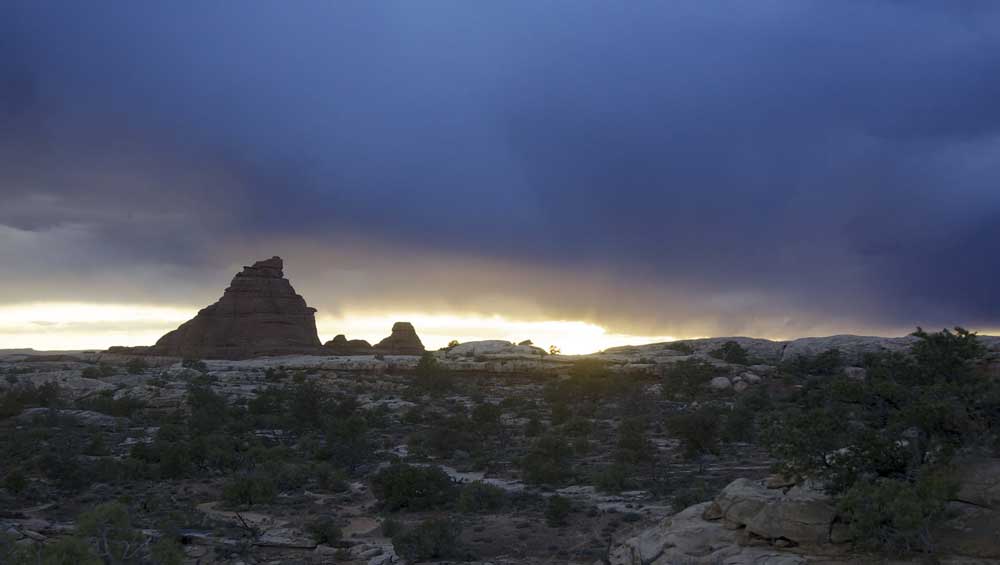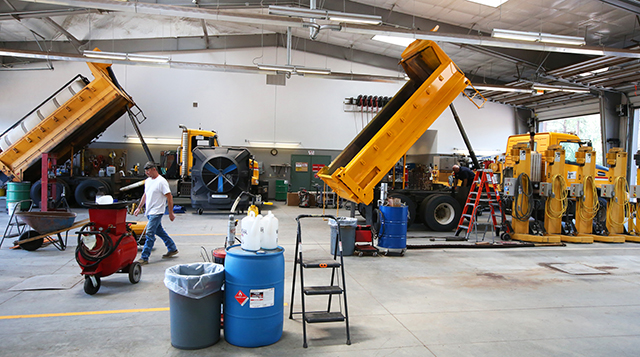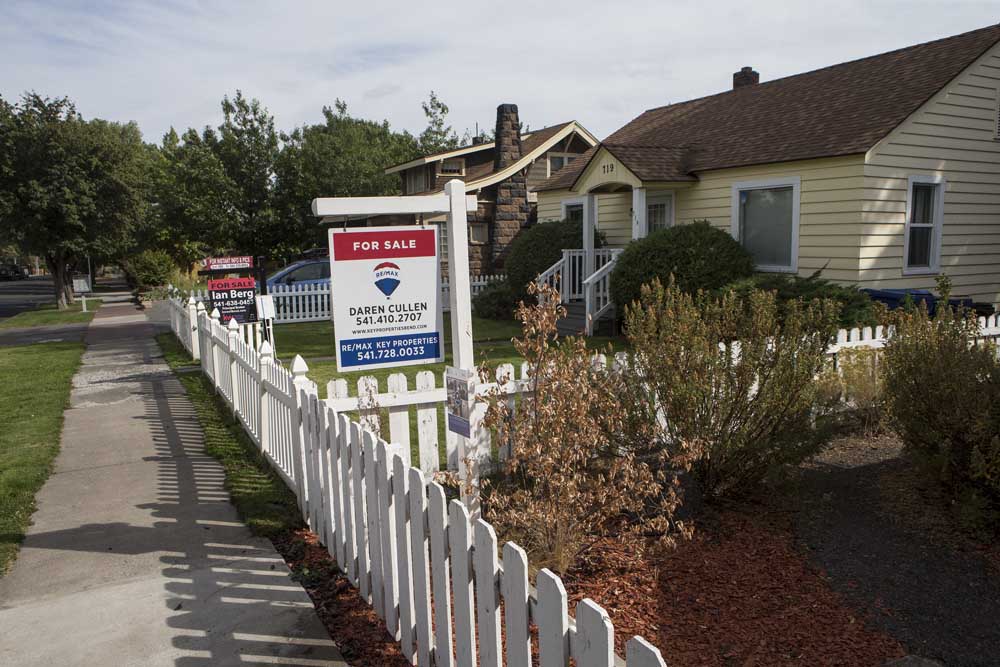Arches vs. Canyonlands: The rocky relationship of two national parks
Published 12:00 am Sunday, November 22, 2015

- Brad Branan / The Sacramento (Calif.) BeeA spring storm darkens the skies and makes travel more difficult in Canyonlands, which is near Moab and Arches National Park.
MOAB, Utah — A sign at Arches National Park features a quote that reads: “Let the people walk.”
It’s a line taken from Ed Abbey’s 1968 nature writing classic “Desert Solitaire.” It might seem like an odd choice: Arches, and its nearest city, Moab, have become virtually everything “Cactus Ed” hated. The asphalt road ribboning through the park has turned Arches into an epitome of “windshield tourism,” allowing visitors to see nearly every attraction without walking. Once-sleepy Moab has become a hub for “adventure travel,” where outfitters offer mountain biking, zip lining, off-road driving — just about everything except plain old hiking.
Trending
But the quote is fitting if taken as an admonition, an interpretation that likely would have suited the curmudgeonly writer who spent two seasons working as a ranger at Arches. In “Desert Solitaire” and other best-selling books, Abbey championed the untamed spaces, making him the conscience of Moab and a favorite of desert dwellers.
“(Improving roads), the engineers and politicians and bankers will tell you, makes the region accessible to everybody, no matter how fat, feeble or flaccid. That is a lie,” he once wrote. “They will never know what we knew or understand what we cannot forget.”
Exploration
Southeastern Utah has become more developed since Abbey’s era, but visitors can still find ways to enjoy the starkly beautiful red-rock country that sent him into rapture — be it by foot, bike, boat or car. This corner of the state is known for its fantastic rock formations. Moab is also unique in that it has two national parks just outside city limits: Arches and Canyonlands, on opposite sides of U.S. 191 about 10 miles apart.
Arches and Canyonlands represent dramatically different visions of what a national park can be. Canyonlands is less developed than Arches, making it more work to see. But explorers will be rewarded. After a daylong hike into Canyonlands — which included crossing the Colorado River — my friend and I discovered “Abbey Country” in a magical place called the Maze, with rock formations that look like candy and dolls. We also found haunting Indian art, colorful cactuses and yes, solitude.
Hard-core hikers will appreciate Canyonlands while less-active travelers will prefer the easy access of Arches. Any true desert lover should see both.
Trending
I started reading Abbey years ago when I lived in Tucson, Arizona. Abbey died in Tucson in 1989, a decade before my arrival. He had a cult following throughout the Southwest. He grew up in comparatively bland surroundings — southeastern Pennsylvania — and fell in love with the dramatic landscape of his adopted home.
A love for the desert
Despite writing almost two dozen books — including one turned into the 1962 Kirk Douglas movie “Lonely Are the Brave” — Abbey never really rose beyond the designation of “regional writer.” Perhaps that’s because he really just focused on one subject: his love of the desert Southwest and his loathing of the forces he saw spoiling it — cities, dams, tourism, etc. He was a bit of a crank, as illustrated in “Desert Solitaire” and “The Monkey Wrench Gang,” a fictional tale about a group of misfits who conspire to blow up the Glen Canyon Dam.
Such is Abbey’s love of the desert that he wanted to be buried there sans casket — a wish his friends carried out in an undisclosed location in southwestern Arizona in 1989.
I have nothing against mountain biking, river rafting or other activities that bring would-be adventurers to Moab. In fact, I participate in some of those sports. However, there were times during my visit to Moab when all the four-wheel-drive and other off-road vehicles gave it the feel of a Mideast war zone. And I worried that the ATVs and mountain bikes were damaging the fragile desert.
Abbey shared those concerns when he was a ranger, long before Arches or Canyonlands became a national park. In a chapter of “Solitaire” called “Industrial Tourism and the National Parks,” he writes that Arches changed for the worse after he left and visitors “find serpentine streams of baroque automobiles pouring in … from 3,000 to 30,000 to 300,000.”
A national attraction
These days, more than 1 million people come to Arches every year, or twice as many as to Canyonlands, which is four times the size of Arches.
Natural arches abound at the park, but the real reason it attracts larger crowds is because of a paved road that brings you a short distance from all the major attractions. Delicate Arch, the red-rock wonder that adorns Utah license plates, requires the most work to see: a half-mile hike. Indian Gardens, Fiery Furnace and other beautiful geologic formations are next to parking lots.
I saw every major attraction at Arches in four hours and left the park before lunch. The geology was incredible, but I felt cheated. Experiencing nature should be about more than air-conditioned sightseeing.
To the credit of the managers of Arches, they give Abbey’s arguments their due in a display inside the visitors center. They also say the road was needed to meet the changing interests of American tourists who want to travel by car.
In contrast, most of the 520 square miles of Canyonlands cannot be accessed by road. The park is divided into four sections: Island in the Sky, the most accessible and a popular area for mountain biking; the Needles, a more remote area with spectacular rock formations; the Rivers, where people raft the Colorado and Green rivers; and the Maze, the least accessible area in the park.
Pressure for change
Park managers long have faced pressure to build more roads into Canyonlands. They’ve largely resisted, convinced in part by Abbey, who urged managers in letters and newspaper op-ed pieces not to repeat the mistakes made at Arches, according to a Canyonlands history published by the National Park Service in 2008. The park’s managers chose a middle ground, recognizing Canyonlands as a “major scenic attraction” and “a model for preservation of a unique natural environment.”
Canyonlands’ ruggedness can make travel difficult, as my buddy and I would learn as we hiked past the spires, buttes and mesas that define the park. Carved by the Colorado and Green rivers, wind and other forms of erosion, the rock formations make the place look like another planet.
Outside Magazine, Backpacker and other publications have called the Maze one of the most dangerous hikes in the country. My friend and I did not find the Maze dangerous, but that’s because we both had GPS units and paper maps to navigate through an area with few defined trails or signs. The Maze is considered risky because it’s easy to get lost there, and it’s remote.
We started our hike in the Needles district, a beautiful showcase of tapering rocks that inspired its name. Rain fell not long after we left, making the ground slippery. I fell and sprained my hand and bruised an arm and a leg. No matter: I got up and continued walking, motivated by the beauty of the desert at sunset and the mystery ahead on the 10-mile hike to the Maze.
The following morning, we reached our next obstacle: the Colorado River. The source of water for most of the West can be crossed only by boat at this section, the nearest bridge miles away. My buddy originally had proposed hiring a boat to carry us across. I had a better idea: my packraft. The 6-pound raft rolls up to the size of a tent, and along with a four-piece paddle, fits in my backpack. This option kept motorized travel out of the itinerary.
The Colorado’s current was stiff as I ferried across with our backpacks. Trees lined the shore on the other side, complicating my docking efforts. On the return trip to pick up my companion, my raft was pulled downstream faster than before, perhaps because of its lighter weight without the packs.
I eventually got to the other side, albeit several hundred feet off course. We crossed the river without incident and made our way to the Doll House, a collection of 100-foot-high sandstone spires resembling figurines. The spires form something of a gate for the Maze and provide a suitably surreal entrance.








